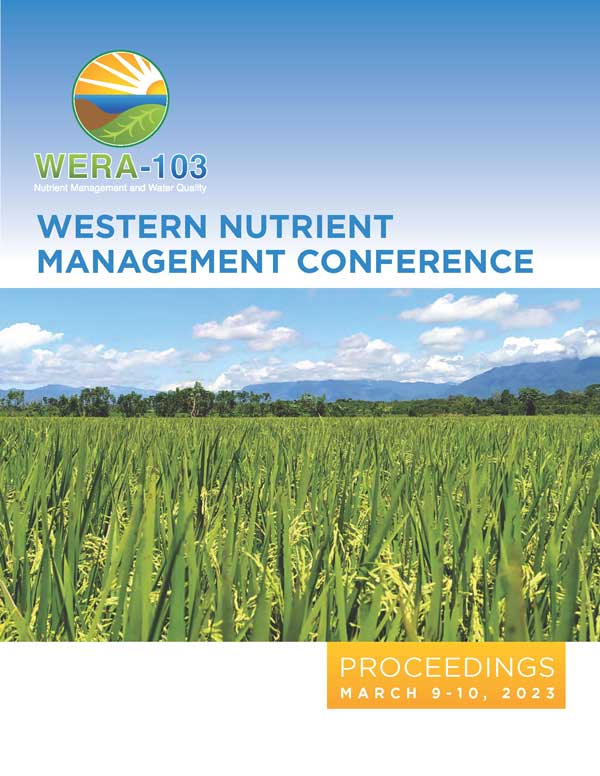Download the Conference Proceedings
Proceedings
Authors
| Filter results2 paper(s) found. |
|---|
1. Impact of an Enhanced Nitrogen Fertilizer (ESN) on Irrigated Crop Production in South Central MontanaTrials were conducted at the Montana State University Southern Agricultural Research Center in Huntley, MT using ESN (44% N, Agrium Advanced Technologies) in combination with urea (45% N) on three different irrigated crops: spring wheat, corn, and sugar beet. Each experiment was a randomized complete block with 4 replications using either 4 or 6 nitrogen rates in combination with 6 or 4 mixing ratios of ESN:urea, plus one unfertilized check for a total of 25 treatments. Urea and ESN were weighed... K. Mcvay, K. Kephart, Q. Khan |
2. Measured and Predicted Temporal Changes in Soil Nitrate-n Levels from Late Summer to Early Spring in MontanaMost soil sampling is conducted from August to November in Montana because of better soil sampling conditions and because it provides more time for growers to make fertilizer decisions prior to application. Fertilizer guidelines in Montana are based on spring nitrate-N levels in the upper 2 ft because they are more indicative of growing season available N than fall nitrate-N levels. It is not known how much nitrate-N levels change between late summer and spring, nor is it known what factors affect... C. Jones, A. Lenssen, C. Chen, K. Mcvay, B. Stougaard, M. Westcott, J. Eckhoff, J. Weeding, M. Greenwood |
